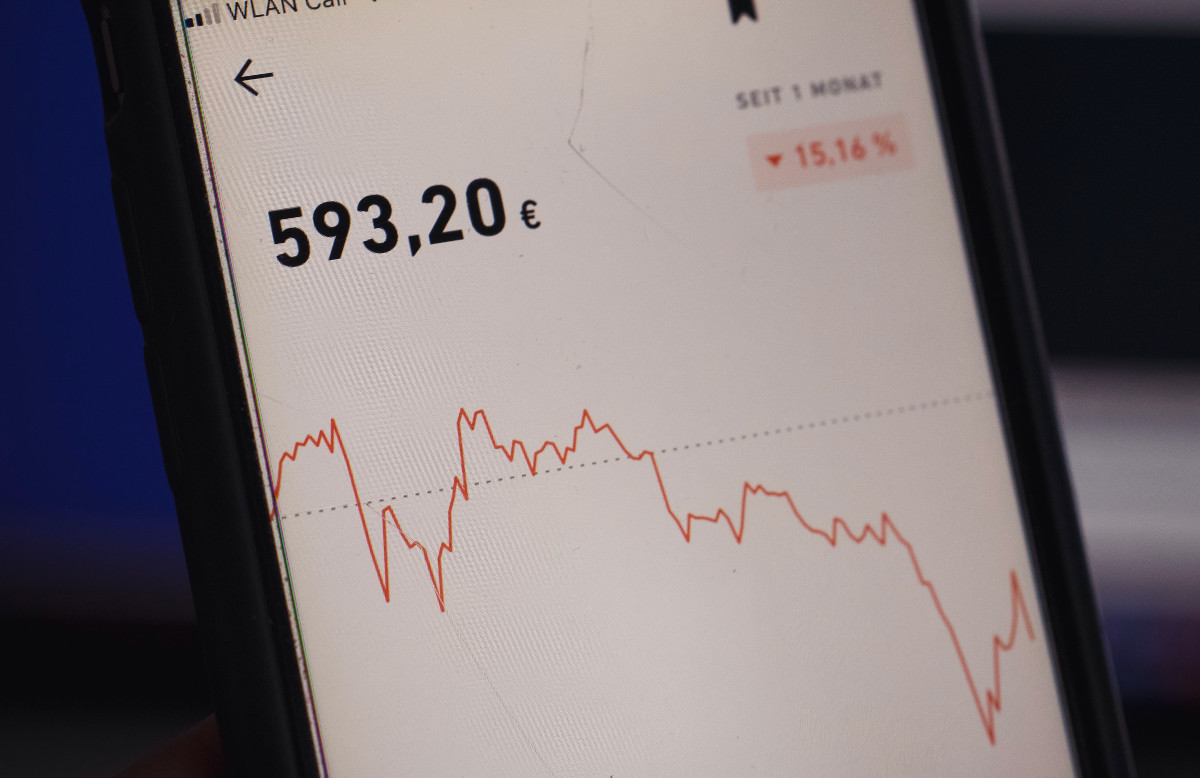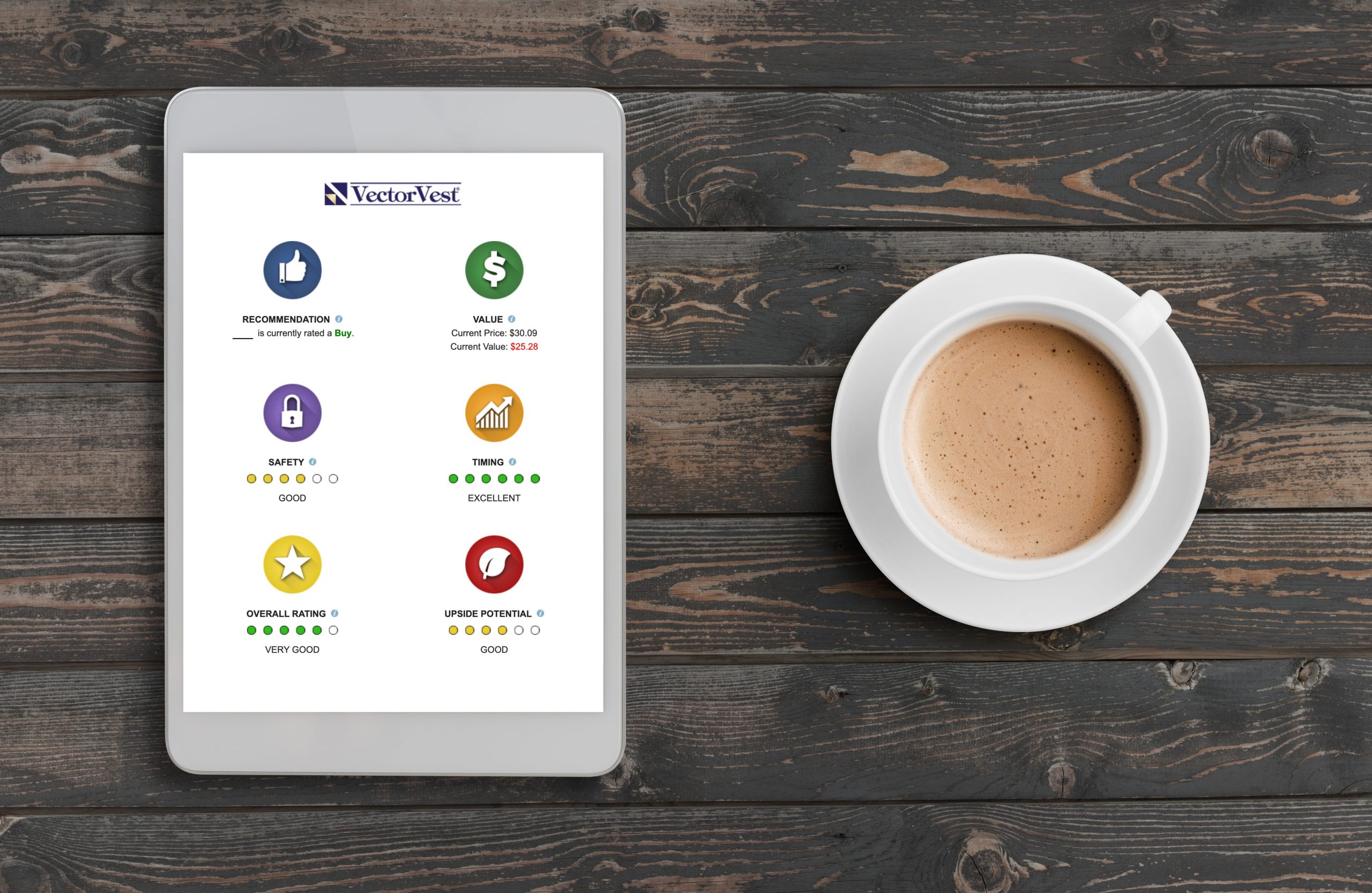Wouldn’t it be nice if you had the ability to consistently enter a position as asset prices were appreciating and then get out right before they started falling back down?
While many scoff at this idea – claiming you can’t time the market – it’s entirely possible. This is known as the market timing strategy.
But what is market timing, exactly? It’s exactly what it sounds like – moving your investment in or out of a financial market using predictive indicators that give you a sense of how trends will shift. Or, sometimes, it involves switching funds between different asset classes.
Either way, the outcome is the same. You’re able to consistently maximize profits and minimize downsides. Sounds great – almost too good to be true.
But it’s not. The VectorVest stock analyzing software is a testament to this, as it’s outperformed the S&P 500 by 10x over the past two decades and counting. As we’ll discuss below, marketing timing is at the core of how VectorVest’s proprietary stock rating system works.
Before we talk about how it all works and what a difference this tool can make in your investment strategy, let’s provide a bit more context for this conversation. We’ll start by addressing one of the most common questions our community asks: what is market timing?
What is Market Timing Strategy?
So, what is market timing strategy? We touched on it a bit already, but now we’re going to provide a more compressive breakdown of the interworkings of this investment approach. Let’s begin with a definition…
Market Timing Defined
As you may already realize, market timing is an investment strategy that involves making buy or sell decisions in financial markets based on predictions about future price movements.
Investors who use this strategy attempt to anticipate the best moments to enter or exit positions, aiming to maximize profits and minimize potential losses. This often involves the use of technical and/or fundamental analysis, as well as the interpretation of various market indicators and signals.
Market timing can be contrasted with a passive investment approach, like buy-and-hold, where investors maintain their positions over the long term, regardless of short-term fluctuations. Market timers, on the other hand, actively manage their portfolios and make calculated decisions to take advantage of changing market conditions.
You can probably imagine how this strategy is a bit more stressful than the traditional approach to investing. But there’s a reason more and more investors are implementing market timing in their investment style. It offers the opportunity for dramatically more profitable trading.
And, when you empower yourself with the right tools for success, it doesn’t have to be nearly as stressful as you may assume. Before we offer some insights on getting started, let’s compare this investment strategy to others you may already be familiar with.
How Market Timing Compares to Other Strategies
Market timing offers the potential for higher returns and better risk management compared to other strategies, such as buy-and-hold and dollar-cost averaging. While it requires more expertise and can be time-consuming, using a proven system like VectorVest can significantly mitigate these challenges.
Buy-and-hold, though simple and cost-effective, may expose investors to market downturns and missed opportunities. Dollar-cost averaging helps reduce the impact of market volatility but may underperform in consistently rising markets.
So – in saying all this, the obvious edge goes to market timing strategy – at least in theory. We’ll talk more about whether you should give this strategy a try momentarily. First, let’s look at a few examples of market timing at play.
What is an Example of Market Timing?
To better illustrate the concept of market timing, let’s explore a couple of examples of what this strategy may look like in practice. In order to do that, we’ll discuss two common types of indicators used in this approach to investing:
- Moving Averages: One common market timing technique involves the use of moving averages. This is the average price of a security over a specified period. When the price of a stock crosses above its moving average, it could be an indication that the stock’s value is on the rise, signaling a potential buying opportunity. Conversely, if the price falls below its moving average, it might be a sign that the stock’s value is decreasing, suggesting that it’s time to sell.
- Economic Indicators: Market timers may also analyze economic indicators such as GDP growth, inflation, and unemployment rates to predict how the overall market might react. For instance, if economic indicators suggest that the economy is weakening, investors may decide to sell stocks and move into safer asset classes like bonds. Conversely, if the economy appears to be on the upswing, they may shift their investments back into stocks to capitalize on the anticipated market rally.
These are just two examples of market timing strategies that investors may use to make informed decisions about when to enter and exit the market. There are countless other technical indicators you can use in your strategy. We’ll share some of our favorites in just a moment as we offer tips for incorporating this tactic into your trading strategy.
First, though, we want to address the elephant in the room. People say you can’t time the market, and that this is inherently a high-risk strategy. Is it true? Find out below…
Is Market Timing High Risk?
Critics argue that trying to predict the market’s future movements is irrational – it’s simply not possible to consistently and accurately forecast market trends. The naysayers contend that attempting to time the market may lead to excessive trading, increased costs, and ultimately, underperformance compared to a passive, buy-and-hold approach.
But, this is flawed thinking. The fact of the matter is that market timing relies on very sound principles. And, when executed correctly, this strategy can lead to superior returns and reduced risk exposure. We believe that a well-researched and disciplined approach to market timing can help investors capitalize on opportunities and avoid significant downturns.
The key to mitigating the risks associated with market timing lies in following a tried and true system that has consistently delivered results. This is where VectorVest comes into play. By combining multiple indicators, data points, and proprietary algorithms, VectorVest has outperformed the S&P 500 by 10x over more than 22 years in a row.
VectorVest’s success in market timing demonstrates that it is possible to reduce the risks typically associated with this strategy. By using a proven, systematic approach, investors can make informed decisions about when to enter and exit the market, ultimately maximizing profits and minimizing potential losses. And below, we’ll explain how it works…
Tips for Incorporating Market Timing Strategy Into Your Investment Approach
By incorporating market timing into your strategy, you can empower yourself to earn higher returns on your trades. And with the right techniques, it actually takes less work than the traditional buy-and-hold approach to investing! Here’s what you need to know…
Take the Time to Learn the Basics
This is just sound advice no matter what strategy you employ – but especially market timing. So, no matter what type of asset you’re trading, immerse yourself in education first.
Here at VectorVest, we have great free resources and paid courses to help you speed up the learning curve and feel confident making that first trade. You can learn stock options trading or learn swing trading, or really, any other investment style for that matter!
Research Cycles
Beyond learning about individual trading styles, research individual cycles. You should have a solid grasp on not just long-term cycles but annual cycles as well. For example, tech stocks tend to perform better in the first half of the year and lag in the latter half. Small-cap stocks perform best in the first quarter and come back to earth in the fourth quarter.
But even knowing these cycles alone isn’t going to help you time the market on a trade-by-trade basis. You need to carefully track timing-based indicators for all your positions or potential plays.
Track Timing Indicators
Traditionally, investors rely on a few key market timing indicators to monitor market trends and make informed decisions about when to buy or sell securities. While you won’t need to use these if you simply invest in yourself through a VectorVest subscription, it’s worth having these in your arsenal nonetheless:
- Moving Averages: We touched on these earlier, moving averages smooth out price data to identify trends over a specific period. Investors can track simple moving averages (SMA) or exponential moving averages (EMA) using charting software or financial websites. By comparing short-term moving averages (e.g., 50-day) with long-term ones (e.g., 200-day), investors can identify potential entry and exit points based on crossovers.
- Relative Strength Index (RSI): RSI is a momentum oscillator that measures the speed and change of price movements. It ranges from 0 to 100 and indicates overbought or oversold conditions. Investors can use charting tools to track RSI and consider it a potential buy signal when it falls below 30 (oversold) and a sell signal when it rises above 70 (overbought).
- MACD (Moving Average Convergence Divergence): MACD is a trend-following momentum indicator that shows the relationship between two moving averages of a security’s price. It consists of the MACD line, signal line, and histogram. Investors can monitor MACD using charting software and look for crossovers between the MACD line and the signal line to identify potential buy or sell signals.
- Bollinger Bands: Bollinger Bands consist of a moving average (usually a 20-day SMA) and two standard deviation bands above and below it. They help investors identify periods of high or low volatility and potential trend reversals. By using charting tools, investors can track Bollinger Bands and look for price movements that touch or cross the bands as potential entry or exit signals.
- Support and Resistance Levels: Support and resistance levels are horizontal lines that represent price levels where buying or selling pressure is likely to increase. You can think of these as the floor and ceiling that an asset’s price should bounce between. They can be identified using historical price data and charting tools, and they will empower you to make informed decisions about when to enter or exit a position based on potential price reversals or breakouts.
- Economic Indicators: Investors can use economic indicators such as GDP growth, inflation, and unemployment rates to gauge overall market sentiment and anticipate potential shifts in asset prices. By regularly monitoring economic data releases and news, investors can make more informed decisions about their market timing strategies in a more long-term viewpoint.
- Market Breadth: Market breadth indicators, such as the advance-decline line or the number of new 52-week highs and lows, help investors gauge the overall health of the market. By tracking market breadth, investors can identify potential trend reversals or confirm the strength of an ongoing trend.
Simplify the Process With VectorVest
The easiest way to start incorporating market timing into your investment style is through VectorVest. It tells you what to buy, when to buy it, and when to sell it – all based on a proprietary stock rating system that has proven itself time and time again.
With just three simple ratings, you’re given all the information you need to feel confident knowing what to buy, when to buy it, and when to sell it. But of these three ratings, the most important for the purpose of your strategy is relative timing (RT).
The RT rating is based on the direction, dynamics, and magnitude of the stock’s price movement. It’s calculated day over day, week over week, quarter over quarter, and year over year. Like all the VectorVest ratings, it sits on a scale of 0.00-2.00 – with 1.00 being the average.
So, how do you use the RT rating to time your entry and exit from a position? Simple. Buy the stock when the RT is rising above 1.00, and sell your position as the stock starts falling back towards 1.00 and below.
It’s really that easy. But, to make things even easier, VectorVest actually gives you a clear buy, sell, or hold recommendation for any given stock, at any given time. How incredible is that? Imagine what a difference this could make in your strategy and how much time and stress it could save you.
Not only does VectorVest help you time the market. But, it can also help you find stocks to swing trade! Through our pre-configured stock screeners, the best opportunities on any given day are brought right to your screen. To align with your market timing strategy, you can sort these lists by hot stocks, high momentum stocks, and daily boomers (top % gained).
However, the VectorVest system isn’t just for aggressive investors who want to implement market timing into their strategy. If you’re planning on living off dividends, we have a screener for that. If you want to try ETF swing trading, we have a list of picks for that. Nothing is impossible with VectorVest!
Be Emotionless
While the VectorVest system can supercharge your success rate and minimize your downside, there will inevitably be times when you fail to time the market.
Whether that means you get in too late and miss the climb, or fail to close your position before an overnight disaster, you need to remain emotionless in your strategy. This is something we discuss in great detail in our guide on cutting losses.
And, again – VectorVest can help you be emotionless. Just follow the system no matter what your heart says. Remember, that stock doesn’t hold the same emotional attachment to you that you do to it!
Wrapping Up Our Beginner’s Guide to Market Timing Strategy
There you have it – it’s time to wrap up this beginner’s guide. So, in summary, what is market timing strategy?
This is a more active investment approach in which you attempt to predict asset price fluctuations. It allows you to earn more profits while keeping your losses smaller and more infrequent. And, despite what some individuals think about it, it works – you can’t deny the results investors are able to consistently achieve through market timing strategy.
If you want to learn more about earning a living through the stock market, explore our blog. We have guides on swing trading for beginners, how to analyze a stock, the ideal asset allocation in retirement, how to hedge against inflation, and so much more.
Otherwise, it’s time to try a free stock analysis today with VectorVest and see what’s possible when you empower yourself with the best swing trading platform!
What you should do next…
- Get our latest blogs delivered right to your inbox, subscribe to our newsletter.
- The market moves fast! Get our most current evaluation of this stock with our FREE stock analysis tool.
- Looking for stock picks? Not sure if now is the right time to buy/sell? For a limited time, enjoy the full benefits of a 30-day subscription to VectorVest for only $0.99 (usually up to $148/month) . Get access to our full list of screeners showcasing our top stock picks that tell you exactly what to buy, when to buy, and when to sell.








Leave A Comment